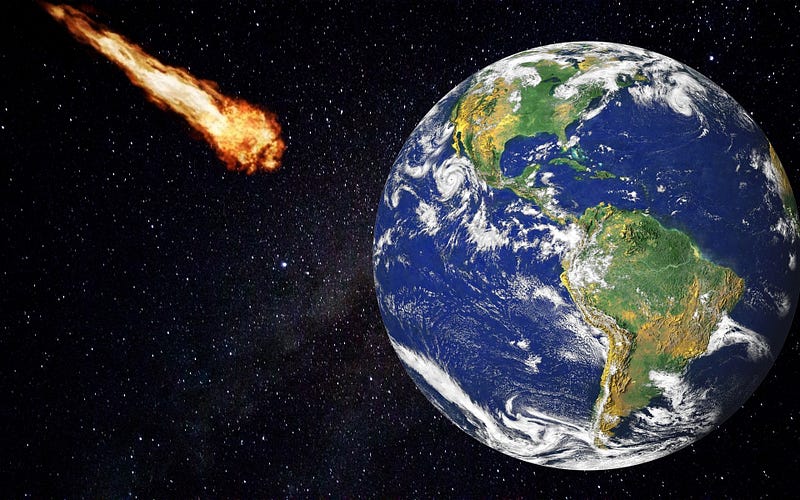Asteroid 2023 BU's Close Encounter with Earth: What You Need to Know
Written on
Chapter 1: The Approach of Asteroid 2023 BU
NASA has revealed that an asteroid identified as 2023 BU will be making a remarkably close pass by our planet this week. This event is set to be one of the nearest encounters with an asteroid ever documented. Should we be concerned?

On Saturday, a small asteroid was detected on a trajectory towards Earth. An amateur astronomer was the first to spot the object, which was later confirmed and designated as 2023 BU. NASA estimates that this asteroid is roughly the size of a delivery truck.
At its closest point, this asteroid will be a mere 3,600 kilometers from Earth—about a tenth of the distance at which most communication satellites orbit our planet. These satellites typically reside in geostationary orbit, positioned at less than 36,000 kilometers above the equator.
The closest approach of 2023 BU will occur tonight at 01:27 CET. But does this asteroid pose a threat to our planet?
Fortunately, the asteroid presents virtually no risk. NASA has concluded that there is no chance of it colliding with Earth. Even if it were to approach closer, it would likely disintegrate upon entering the atmosphere.
Astronomers estimate that 2023 BU measures between 3.5 and 8.5 meters in diameter. Its flyby will alter its orbit significantly, extending it from a previous 359-day cycle around the Sun to a new period of 425 days.

Chapter 2: Discovery and Tracking of 2023 BU
Who identified asteroid 2023 BU?
The discovery of 2023 BU is credited to Gennady Borisov, an amateur astronomer from Crimea. Borisov previously gained recognition for spotting an exceptionally rare interstellar comet, which was named 2I/Borisov in his honor.
On Saturday, Borisov reported the sighting of 2023 BU, leading to further observations by other astronomers, which were then communicated to the Minor Planet Center (MPC). This organization collects data on non-small celestial bodies within our Solar System.
After just three days of observations, astronomers were able to predict the asteroid’s probable orbit, feeding this data into NASA’s Scout system. Scout was developed to assess the potential risk of collision with Earth for incoming space objects.
“Scout quickly confirmed that 2023 BU would not impact Earth,” explained Davide Farnocchia, the system’s creator. “Despite the limited observations, it was able to indicate that the asteroid would come incredibly close to Earth, marking one of the closest approaches on record.”
2023 BU has been officially categorized as a Near Earth Object (NEO). Interestingly, most NEOs do not pose any threat to our planet. As stated on NASA’s website, “Only a small fraction of them require attention, known as ‘potentially hazardous asteroids,’” which must be at least 140 meters in diameter—significantly larger than 2023 BU.
The first video titled "Look Up In 2029 To See This Asteroid Pass Earth CLOSER THAN SOME SATELLITES" explores the implications of asteroid approaches and their significance in astronomy.
The second video, "LIVE ASTEROID CLOSE APPROACH TO EARTH! (2024 MK) - YouTube," provides real-time insights and updates about asteroid encounters with Earth.
Thank you for reaching the end of this article! If you found it helpful, please consider showing your appreciation by clapping or following me. Your support means a lot!